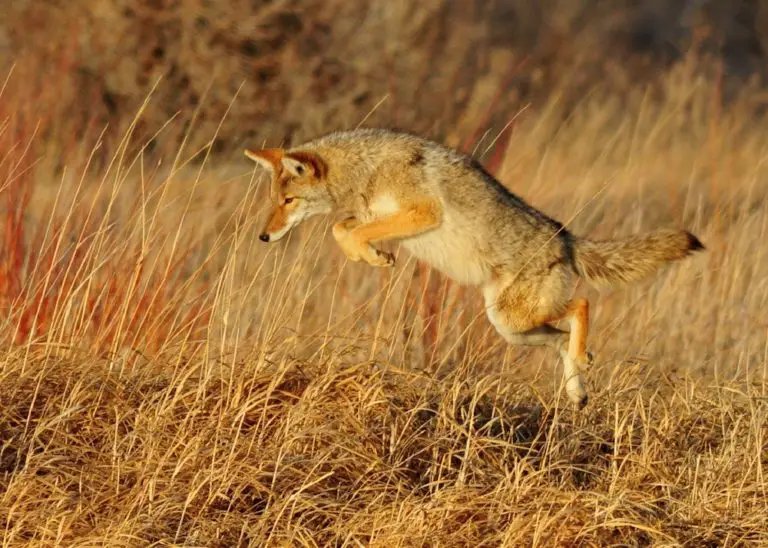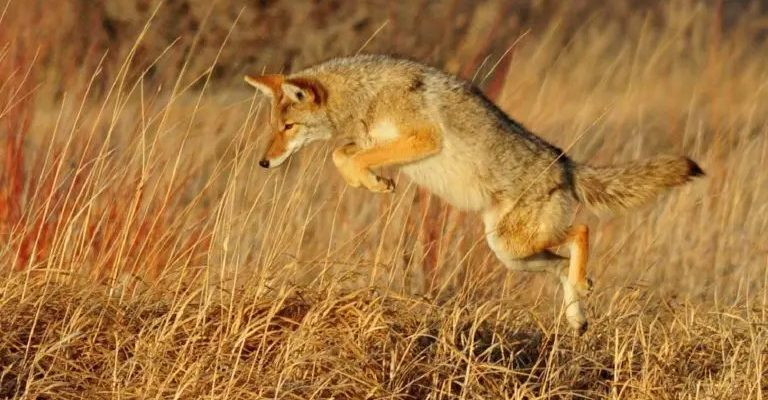
Coyotes are renowned for their adaptability, which allows them to thrive in various habitats—from urban settings to remote deserts. Their cunning nature not only aids in hunting but also in foraging. So, whether they’re chasing prey or scrounging for a meal, coyotes are resourceful and strategic in their approach. Here’s a closer look at their diet and hunting strategies, so you can appreciate these intriguing animals a bit more.
Understanding the Coyote’s Diet
Coyotes are *omnivores*, which means they eat both plants and animals. This diverse diet helps them survive in different environments. You might be wondering just what these adaptable creatures munch on regularly. Well, coyotes have a menu that includes:
- Small mammals like rabbits and rodents
- Birds of various kinds
- Fruits and vegetables, depending on what’s in season
- Insects and carrion (which means dead animals)
Each meal provides them with essential nutrients. In particular, small mammals make up a significant portion of their diet, giving them the energy needed to hunt and survive. But here’s the kicker: when food is scarce, coyotes can adapt and eat just about anything. They’re known to scavenge from human garbage or even find food at farms or city parks. This adaptability is vital for their survival, especially in changing environments.
Furthermore, coyotes’ diet can change with the seasons. In spring and summer, they’re more likely to feast on fruits and vegetation, while winter drives them toward hunting small mammals as those sources diminish. This flexibility is part of what helps them thrive, even when resources fluctuate.
Hunting Techniques: Solo and Pack Strategies
When it comes to hunting, coyotes are skilled and strategic. They can hunt alone or in groups, depending on the situation. Think of it like a team sport where sometimes collaboration is key, and other times individual skill shines through.
When hunting alone, a coyote relies on its agility and keen senses. They often use stealth to sneak up on their prey, taking advantage of their surroundings for cover. For instance, they might crouch low in the grass, using their excellent hearing to detect movement. This is where their slender bodies and quick reflexes come into play, allowing them to pounce at just the right moment.
On the other hand, when coyotes hunt in packs, they showcase teamwork. They might coordinate their movements to corner prey, making it easier to catch animals that would be otherwise too quick or elusive. This pack behavior can be seen when they hunt larger game or when they’re trying to consume food that requires more than one set of jaws. It’s like watching a well-rehearsed dance, where each member knows their role perfectly.
The Role of Vocalizations in Hunting
Coyotes are known for their distinctive vocalizations, which play a crucial role in their hunting strategies. Their howls, yips, and barks are more than just sounds; they communicate with one another during hunts. But how does this work?
Imagine you’re at a concert with friends. The music guides you in synchronizing your moves together, right? Similarly, coyotes use their calls to signal their location, alert others to potential prey, or even coordinate their efforts during a hunt. When a coyote howls, others in the area might respond, creating a chorus that helps them work together efficiently.
These vocalizations can also serve as a way to mark territory or ward off potential competitors. By making their presence known, coyotes can maintain control over their hunting grounds and ensure they have access to food sources without interference from other coyotes or predators.
Seasonal Changes in Hunting Behavior
With the change of seasons, the dynamics of coyote hunting strategies also shift. In winter, their hunting patterns may become more aggressive as food becomes scarcer. Here’s what you might notice:
– Increased Scavenging: During colder months, coyotes are more likely to scavenge for food. They’ll search for carcasses left by other animals or even hunt in urban areas where food remains might be more accessible.
– Shift in Prey: Their preferred prey can change depending on availability. For example, in winter, they may focus on hunting rabbits more heavily, while in spring, fruits might become a bigger part of their diet.
– Hunting Tactics: As the snow covers the ground, coyotes adapt their tactics. They may rely on more teamwork to flush out prey hidden under the snow or use the cover of darkness to hunt more effectively.
These seasonal adaptations highlight just how flexible and resourceful coyotes truly are. It’s a testament to their ability to thrive in a variety of conditions, making them one of nature’s most skilled survivors.
The Impact of Human Activity on Coyote Behavior
As much as coyotes adapt to nature, they also adjust to human environments. Urbanization has had a significant impact on their hunting strategies and diet. You might be surprised to learn that coyotes can thrive in cities, often finding new sources of food.
In these urban settings, coyotes have learned to hunt smaller pets and scavenge from trash bins. They also find food in parks or gardens, where people might unintentionally provide easy meals. This adaptability to human presence shows just how clever these animals are.
However, living near humans also presents challenges. As their habitats overlap with urban areas, humans often view coyotes as pests or dangers. This can lead to conflicts that endanger both coyote populations and human pets. Understanding their behavior is crucial for coexisting peacefully, so education and awareness can help us appreciate these animals and their role in our ecosystems.
Final Thoughts on Coyotes
Coyotes are remarkable creatures with a fascinating blend of tenacity and adaptability. Their diverse diet and clever hunting strategies allow them to thrive in many environments, from the wild to urban landscapes. Understanding their behavior not only helps us appreciate their role in nature but also reminds us of the delicate balance between wildlife and human activity.
By observing and learning about coyotes, we foster a greater respect for these animals and the ecosystems they inhabit. So, the next time you hear a coyote howl in the distance, remember you’re witnessing the survival instincts of a highly adaptable predator. Let’s continue to explore and learn about the wild world around us—there’s always something new to discover!

